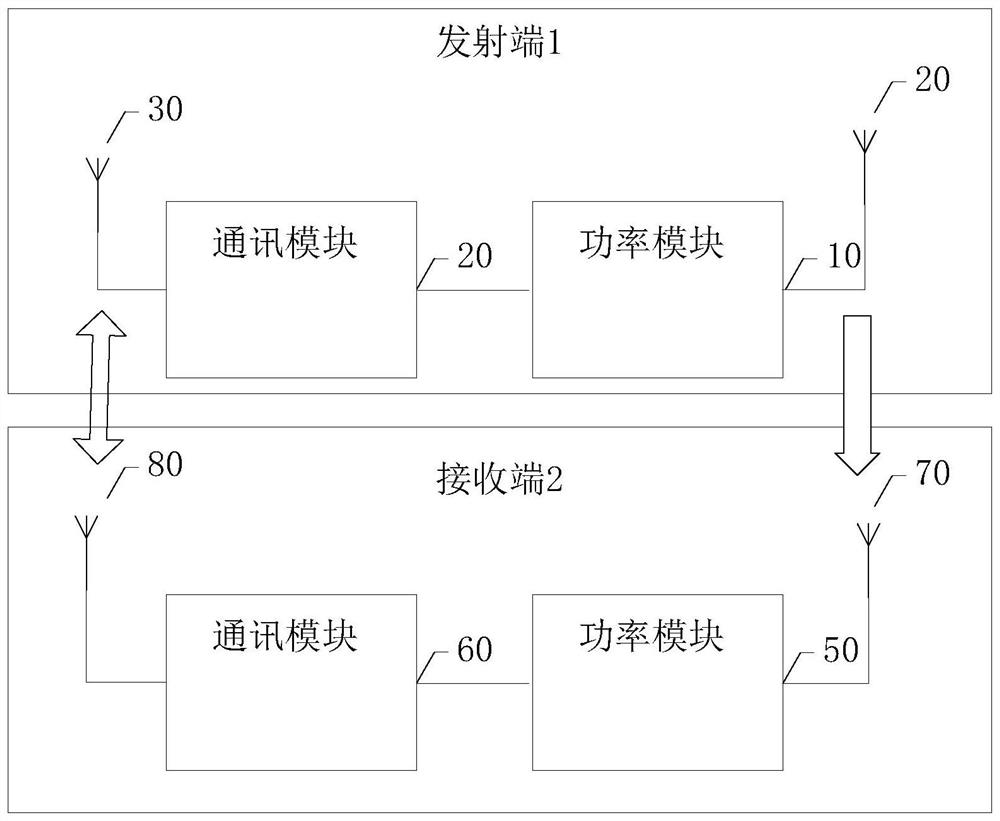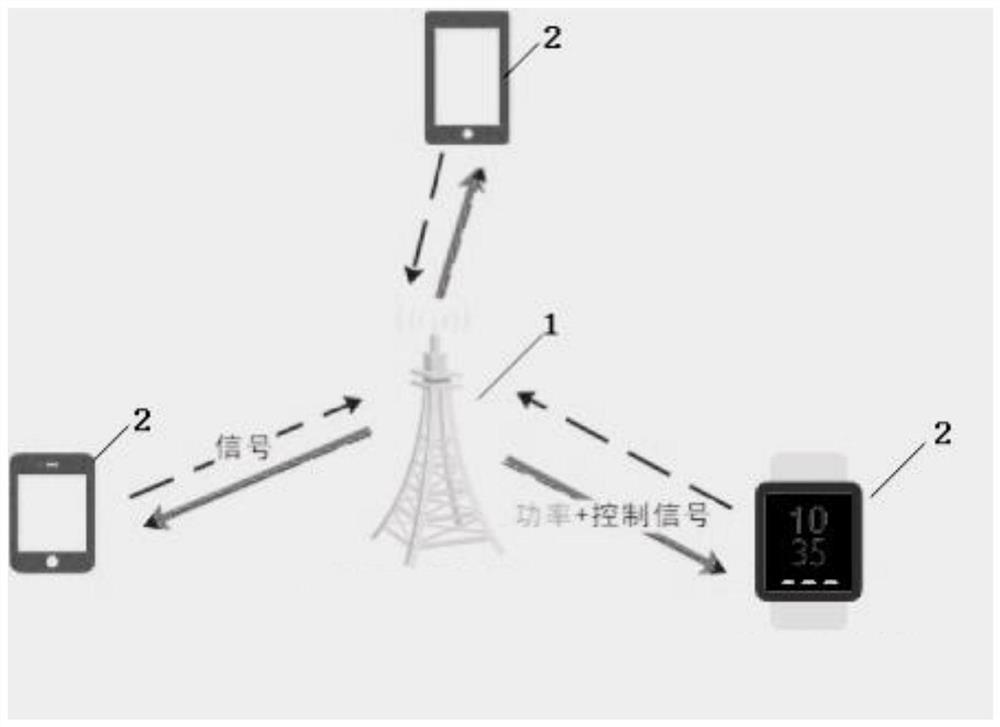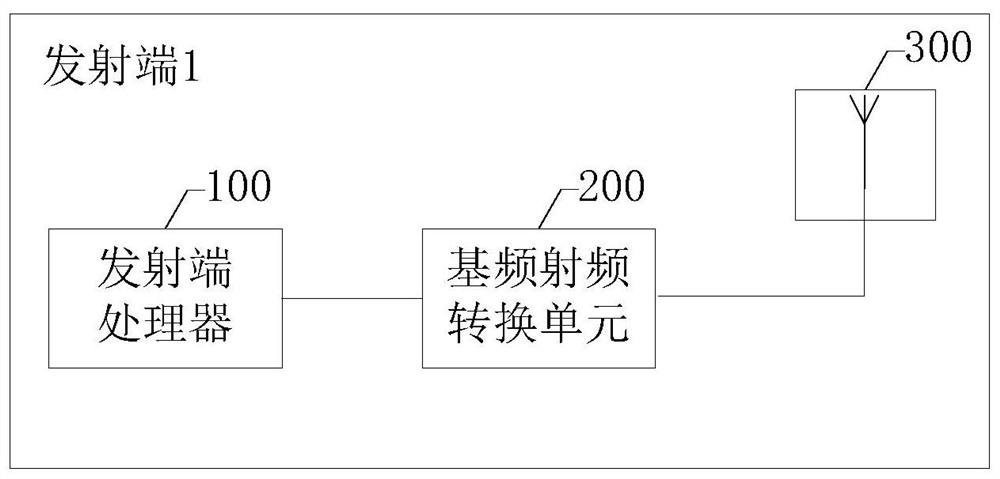Transmitting end, receiving end and system for long-distance wireless charging
A wireless charging and receiving end technology, applied in the transmission system, signal transmission system, electrical components, etc., can solve the problems of high cost and complex hardware structure, and achieve the effect of reducing cost, simplifying hardware structure, and simplifying the transmission path
- Summary
- Abstract
- Description
- Claims
- Application Information
AI Technical Summary
Problems solved by technology
Method used
Image
Examples
Embodiment 1
[0077] The embodiment of the present application provides a transmitter for long-distance wireless charging. The transmitter processor of the transmitter can generate a composite signal according to the power signal and the control signal, and send the composite signal through a transmission path to realize wireless charging and control of the receiver. . The transmitter simplifies the internal hardware structure and reduces the cost of the entire transmitter.
[0078] The embodiments provided by the present application will be described in detail below in conjunction with the accompanying drawings.
[0079] see image 3 , which is a schematic diagram of a transmitter for long-distance wireless charging provided in this embodiment.
[0080] For the convenience of description, a receiving end is taken as an example for introduction below.
[0081] The transmitter 1 provided in this embodiment is used for wirelessly charging the receiver 2 . The transmitting end 1 includes a...
Embodiment 2
[0105] An embodiment of the present application provides a transmitter for long-distance wireless charging. The transmitter processor of the transmitter can generate a high PAPR waveform according to the feedback signal, and generate a phase modulation signal according to the control signal. The phase modulation signal does not adjust the high PAPR signal waveform. Envelope amplitude, and adjust the phase of the overall high PAPR signal to generate a composite signal, thereby stimulating the receiving end to enter high-efficiency power conversion and improving the output DC power of the receiving end.
[0106] The embodiments provided by the present application will be described in detail below in conjunction with the accompanying drawings.
[0107] see Figure 8 , which is a schematic diagram of another remote wireless charging transmitter provided in this embodiment.
[0108] Wherein, the transmitter processor 100 adopts Figure 4 form, the baseband radio frequency convers...
Embodiment 3
[0138] Because the energy generated by the transmitter will attenuate with the increase of distance. That is, as the distance between the transmitting end and the receiving end increases, the more energy will be consumed on the transmission path, the energy received by the receiving end will decrease, and the transmission power and efficiency will also decrease accordingly. In order to ensure that the receiving end receives energy that meets the requirements of the receiving end, the usage scenarios of the receiving end are divided into fixed scenarios and mobile scenarios for introduction below.
[0139] The fixed scene is a scene in which the position of the receiving end hardly changes during wireless charging. For example, when the receiving end is an IoT device, the range of activities of the IoT device is generally in the factory, warehouse or computer room, and the position of the IoT device hardly changes, that is, the position of the receiving end remains unchanged, w...
PUM
 Login to View More
Login to View More Abstract
Description
Claims
Application Information
 Login to View More
Login to View More - R&D
- Intellectual Property
- Life Sciences
- Materials
- Tech Scout
- Unparalleled Data Quality
- Higher Quality Content
- 60% Fewer Hallucinations
Browse by: Latest US Patents, China's latest patents, Technical Efficacy Thesaurus, Application Domain, Technology Topic, Popular Technical Reports.
© 2025 PatSnap. All rights reserved.Legal|Privacy policy|Modern Slavery Act Transparency Statement|Sitemap|About US| Contact US: help@patsnap.com



